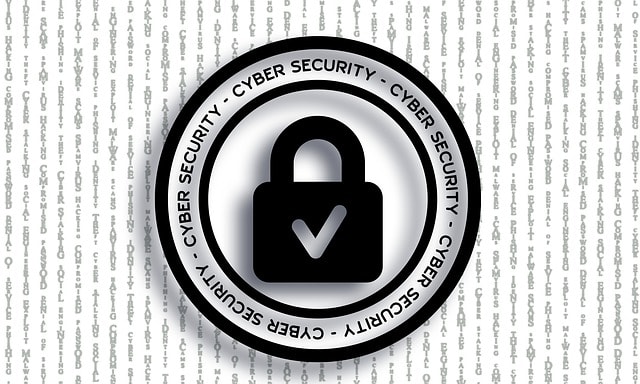Network management is important for modern businesses as it ensures smooth operations, enhances security and boosts efficiency. Whether you’re a small business owner, IT professional, or someone curious about network functionality, understanding network management is essential.
This guide offers a comprehensive overview to help maintain your network’s operation seamlessly and securely.
What Is Network Management?
Network management involves overseeing and maintaining computer network performance, reliability, and security within an organization. This includes configuring network devices, monitoring operations, and managing resources to make sure efficient connectivity.
Network management systems provide platforms and tools for IT teams to perform these tasks effectively. Advancements in technology, such as analytics, machine learning, and automation, optimize network performance.
With the shift to distributed workforces, network management systems are increasingly being implemented in cloud and hosted environments. This is especially helpful for flexible and scalable solutions, ensuring networks operate smoothly and securely.
Types of Network Management
Network management can be categorized into several types, each focusing on different aspects of network operation:
Fault Management
The primary objective of fault management is to detect, log, and resolve network issues. Achieving this involves network monitoring systems, event logs, and diagnostic tools. Effective fault management minimizes downtime and secures quick resolution of network problems, thereby maintaining the smooth operation of network services.
Configuration Management
The goal of configuration management is to maintain accurate records of network configurations and changes. Tools such as configuration management databases (CMDBs) and automation tools facilitate this. The benefits of configuration management include ensuring consistency and compliance across the network and providing an easy path to recovery from configuration errors.
Performance Management
Performance management focuses on monitoring and optimizing network performance. This type of management tool includes performance monitoring software and traffic analyzers. By enhancing network efficiency and improving the user experience, performance management plays an important role in maintaining the overall health and functionality of the network.
Security Management
The objective of security management is to protect the network from unauthorized access and threats. Tools like firewalls, intrusion detection systems (IDS), and antivirus software achieve this. Security management protects sensitive data and maintains the integrity of the network, ensuring that it remains secure against potential cyberthreats.
Accounting Management
Accounting management tracks network usage for billing and resource allocation. This involves using usage tracking software and billing systems. Accounting management verifies fair resource allocation and accurate billing, helping organizations manage their network resources efficiently and transparently.
How Does Network Management Work?
Network management ensures an efficient and secure IT infrastructure by collecting and analyzing data from network devices. Here are the key components of effective network management:
- Administration: Network administrators monitor, troubleshoot, and maintain network devices to uphold optimal performance, reliability, and security.
- Provisioning: This involves allocating and configuring network resources, setting up new devices, allocating bandwidth, and defining Quality of Service (QoS) parameters.
- Security: Implement security policies, firewalls, access controls, and intrusion detection systems to protect the network from threats like unauthorized access, malware, and data breaches.
- Automation: Using software tools and scripts to automate routine network management tasks, reducing human intervention and increasing efficiency.
- Maintenance: Regular tasks include updating firmware, patching software vulnerabilities, and replacing faulty hardware to sustain network reliability and performance.
- Protocols: Configuring and maintaining the rules and standards governing communication between devices to facilitate seamless data exchange.
- Analytics: Gathering and analyzing data from network devices to identify trends, detect irregularities, and optimize performance, enabling data-driven decisions.
Network management systems (NMS) integrate these components and maintain a strong and secure network infrastructure.
The Benefits of Network Management
Effective network management offers numerous benefits that can improve the overall efficiency and security of a business:
- Improved Performance: Continuous monitoring and performance management make sure efficient use of network resources, improving network performance.
- Reduced Downtime: Proactive fault management helps identify and resolve issues before they cause significant disruptions, minimizing downtime.
- Better Security: Regular updates and security management practices protect the network from potential threats and vulnerabilities.
- Cost Savings: Efficient network management reduces the need for costly emergency repairs and downtime, resulting in long-term cost savings.
- Scalability: Properly managed networks can scale more easily to accommodate business growth and evolving technological needs.
- Compliance: Network management ensures compliance with industry standards and regulations, avoiding potential legal and financial penalties.
By promoting seamless collaboration across departments, effective network management strengthens organizational agility and innovation capabilities.
Best Practices for Network Management
Implementing best practices in network management is essential for maintaining a strong, secure, and efficient network. Here are some key best practices to consider:
- Develop a comprehensive network plan outlining design, components, security measures, and scalability.
- Use advanced tools for tracking real-time performance, traffic, and security metrics.
- Leverage automation for configuration changes, updates, and backups to improve efficiency.
- Regularly updating network devices and software helps defend against vulnerabilities.
- Implement firewalls, VPNs, encryption, and conduct regular security audits.
- Provide team training in the latest technologies and best practices for a skilled workforce.
- Develop and test a comprehensive disaster recovery plan.
- Continuously analyze performance metrics and optimize network resources.
- Maintain detailed documentation of configurations and changes for troubleshooting.
- Stay updated on industry standards and technologies for aligned network strategies.
The Importance of Network Management Providers
Modern businesses require network management providers because they proactively maintain and secure network infrastructure. They continuously monitor networks for performance issues and security threats, preventing disruptions and ensuring reliable access to resources. Providers safeguard sensitive data and maintain regulatory compliance by implementing strong security measures like firewalls and encryption.
Outsourcing network management also offers cost efficiencies by eliminating the need for in-house infrastructure and specialized staff. Providers bring expertise in managing complex networks, offering strategic guidance on technology upgrades and best practices. This expertise supports business growth through scalable and flexible network solutions tailored to evolving needs.
Improve performance, security, and efficiency with our team at CMIT Solutions I-270 Corridor. Whether you’re safeguarding against cyberthreats or improving network reliability, our tailored solutions ensure your business stays connected and protected. Contact us today to discover how we can support your business growth and security needs!





